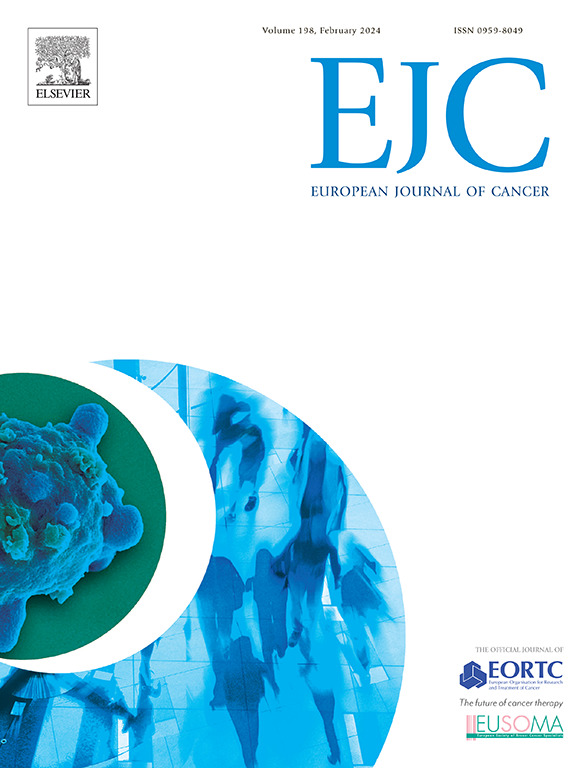Comparative efficacy of immunotherapy-based treatment versus chemotherapy-only in patients with unresectable NSCLC with disease progression post chemoradiation and durvalumab
IF 7.6
1区 医学
Q1 ONCOLOGY
引用次数: 0
Abstract
Introduction
The current standard of care for fit patients with unresectable stage III NSCLC involves concurrent chemoradiation (CRT) followed by durvalumab. Disease recurrence occurs in approximately 2/3 of patients, often necessitating subsequent systemic therapy. The only available data about re-challenge immune checkpoint blockers (ICB) in this setting derives from small retrospective series. We evaluated progression free survival (PFS) and overall survival (OS) in patients receiving either ICB-based therapy versus a chemotherapy (CT)-only for disease progression after CRT and durvalumab.
Materials and methods
Multicenter retrospective study, conducted across 10 centers in Italy, the USA, Israel, and The Netherlands. Consecutive patients with relapsed NSCLC following CRT and durvalumab were enrolled.
Results
A total of 197 patients met the eligibility criteria: 93 received CT ( ± anti-VEGF), and 104 received an ICB-based treatment ( ± CT). The median PFS for patients receiving an ICB-based versus a CT-only regimen was 5.9 (95 % CI 4.3–7.6) versus 4.9 months (95 % CI 3.9–5.8), respectively (p = 0.011, HR: 0.67, 95 % CI 0.49–0.91). The median OS was 14.6 months (95 % CI 9.9–19.4) versus 8.9 (95 % CI 7.4–10.4), respectively (p = 0.005, HR: 0.61, 95 % CI 0.43–0.86). Patients with PFS ≥ 12 months on durvalumab, treated with subsequent ICB or CT median OS was 22.0 (95 % CI: 12.9–31.2) 9.8 months (95 % CI: 4.3–15.2) respectively (p = 0.024). Among patients with a PFS < 12 months on durvalumab there was no significant OS difference between ICB and CT arms.
Conclusions
ICB retreatment at disease progression after CRT and durvalumab might offer an OS benefit over CT in patients who do not relapse during durvalumab treatment.
求助全文
约1分钟内获得全文
求助全文
来源期刊

European Journal of Cancer
医学-肿瘤学
CiteScore
11.50
自引率
4.80%
发文量
953
审稿时长
23 days
期刊介绍:
The European Journal of Cancer (EJC) serves as a comprehensive platform integrating preclinical, digital, translational, and clinical research across the spectrum of cancer. From epidemiology, carcinogenesis, and biology to groundbreaking innovations in cancer treatment and patient care, the journal covers a wide array of topics. We publish original research, reviews, previews, editorial comments, and correspondence, fostering dialogue and advancement in the fight against cancer. Join us in our mission to drive progress and improve outcomes in cancer research and patient care.
 求助内容:
求助内容: 应助结果提醒方式:
应助结果提醒方式:


